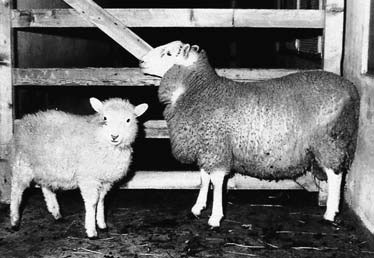Border Disease Virus
(NY) 1,708 weaned 4-month-old crossbred lambs averaging 115 lbs. were purchased from one farm in Colorado and transported to a New York sheep farm in September 2019. The lambs were shorn in late October and within a few days 20-25 lambs began dying per day. The attending veterinarian performed 20 field necropsies. Findings varied from no obvious lesions to pneumonia, poor body condition, and grain overload. More than 300 lambs died over a three-week period. Fixed and fresh tissues from five lambs were submitted to the Animal Health Diagnostic Center, and all 5 lambs had histologic evidence of bronchopneumonia, pleuritis and sepsis. Border Disease Virus (BDV) was isolated from fresh tissues from 3 of the 5 lambs in cell culture by the Virology laboratory. Acute and convalescent serology is currently being performed to further characterize the epidemiology of this outbreak.

Border disease virus (BDV), bovine viral diarrhea virus (BVDV) types 1 and 2, and classical swine fever virus (CSFV) are Pestiviruses in the Flaviviridae family. BDV and BVD infect both cattle and small ruminants. BDV was originally reported in 1959 on the border between England and Wales, hence the name. Infected flocks experience infertility, abortions, and "hairy shakers", which are persistently infected lambs, much like BVDV PI calves. They are described as hairy shakers due to the poor wool coat that looks like hair, and the congenital neurologic defects that can result in tremors. Ewes must be infected with BDV before 60 days of gestation to give birth to hairy shaker lambs. After 85 days gestation, the fetus is immunocompetent, and the ewe gives birth to a healthy lamb with antibodies to BDV (1). In addition to congenital infections, BDV may also cause acute infections which usually are complicated due to the immune suppressive characteristics of the virus (2).
Reference for article content and image:
- Nettleton, P.F. and Willoughby, K. (2008). Border Disease. In Diseases of Sheep, I. Aitken (Ed.). doi:10.1002/9780470753316.ch18
- Crilly, J., Jennings, A., Gascoigne, E. Border disease: an under-appreciated threat to flock health and productivity? In: Livestock, Vol. 23, No. 2, 12.03.2018, p. 88-92


